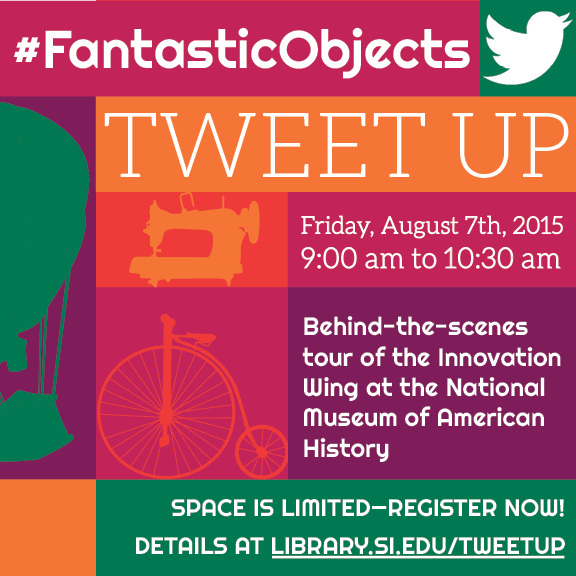Today, many of us are probably familiar with insulated bags that help keep food cold, or even warm, until you get to your destination. But did you know there was a picnic basket in the nineteenth century that did something similar?
Smithsonian Libraries and Archives / Unbound
This post was written by Lesley Parilla, database manager and cataloger for the Field Book Project.
What is a library to do when it has fabulous materials to share with users, but making library records for each item requires significantly more time than a typical collection? This was the challenge of the Russell E. Train Africana collection. It contained materials with both broad public appeal and significant historical value, however content and formats varied widely. The library wanted to create records in the predominant library and archival description standards to assure that materials would be discovered by as wide an audience as possible. By using the library and archive standards, records could easily be shared across online platforms. The Libraries decided to pursue a short term project to see if they could determine a solution to these challenges.

The inescapable question for any college senior is always some variation of “So, graduation is coming up soon, what you plan on doing with your future?” It seems that all other conversation topics must make way to this frightening yet incredibly relevant question.
James Smithson, whose bequest led to the establishment in the mid-19th century of the American institution that now bears his name, famously stated in his will that funds should be used for the “increase and diffusion of knowledge among men.” This seemingly vague request is rooted in Enlightenment philosophy, the desire to create order and understanding in the world. As Heather Ewing wrote in The lost world of James Smithson, he was a member “of this distinct breed of English Enlightenment gentleman: citizens of a new republic of science, dedicated to the cause of ‘improvement.’”
For many Americans, mid-summer is best spent by the shore; beaches and lakes are traditionally packed this time of year. And if you’re lucky, that little time by the water will involve a glimpse at some aquatic life — a sand crab, a sea star, perhaps a fish or two. If your summer sightings have inspired an interest in fish (or perhaps you want to save yourself the sunscreen and view some wildlife from the comfort of your computer screen), one of our favorite sources of undersea imagery is the ichthyology work of Marcus Elieser Bloch (1723-1799).
This post was written by Adrian Vaagenes, intern in the National Museum of American History Library.
The 4th of July is upon us, and for many of us this means, to borrow a quote from The Simpsons, it’s “time to celebrate the independence of our nation by blowing up a small part of it”. Just as we enjoy lighting roman candles, sparklers, cherry bombs, and m-80’s, these pieces of trade literature in our collection show that our forefathers and foremothers of yesteryear were just as delighted by pyromancy and destruction.

